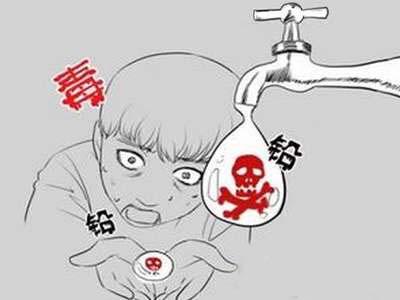第十章 把铅撵出去
In the late 1940s, a graduate student at the University of Chicago named Clair Patterson (who was, first name notwithstanding, an Iowa farm boy by origin) was using a new method of lead isotope measurement to try to get a definitive age for the Earth at last. Unfortunately all his samples came up contaminated—usually wildly so. Most contained something like two hundred times the levels of lead that would normally be expected to occur. Many years would pass before Patterson realized that the reason for this lay with a regrettable Ohio inventor named Thomas Midgley, Jr.
20世纪40年代末,芝加哥大学一位名叫克莱尔·彼得森(尽管姓彼得森,他原先是艾奥瓦州的一个农家孩子)的研究生在用一种新的铅同位素测量法,对地球的确切年龄作最后的测定。不幸的是,他的岩石样品全部给污染了──而且还污染得很厉害。大多数样品里的铅含量超过正常浓度的大约200倍。许多年以后,彼得森才明白,问题出在俄亥俄州一个名叫小托马斯·米奇利的人身上。

Midgley was an engineer by training, and the world would no doubt have been a safer place if he had stayed so. Instead, he developed an interest in the industrial applications of chemistry. In 1921, while working for the General Motors Research Corporation in Dayton, Ohio, he investigated a compound called tetraethyl lead (also known, confusingly, as lead tetraethyl), and discovered that it significantly reduced the juddering condition known as engine knock.
米奇利是一名受过训练的工程师,要是他一直当工程师,世界本来会太平一些。但是,他对化学的工业用途发生了兴趣。1921年,他在位于俄亥俄州代顿的通用汽车研究公司工作期间,对一种名叫四乙铅的化合物作了研究,发现它能大大减少震动现象,即所谓的发动机爆震。
Even though lead was widely known to be dangerous, by the early years of the twentieth century it could be found in all manner of consumer products. Food came in cans sealed with lead solder. Water was often stored in lead-lined tanks. It was sprayed onto fruit as a pesticide in the form of lead arsenate. It even came as part of the packaging of toothpaste tubes. Hardly a product existed that didn't bring a little lead into consumers' lives. However, nothing gave it a greater and more lasting intimacy than its addition to gasoline.
到20世纪初,大家都知道铅很危险,但它仍然以各种形式存在于消费品之中。罐头食品以焊铅来封口;水常常储存在铅皮罐里;砷酸铅用做杀虫剂喷洒在水果上。铅甚至还是牙膏管子的组成材料。几乎每一件产品都会给消费者的身体里增加一点儿铅。然而,人接触机会最多、接触时间最长的,还是添加在汽油里的铅。













